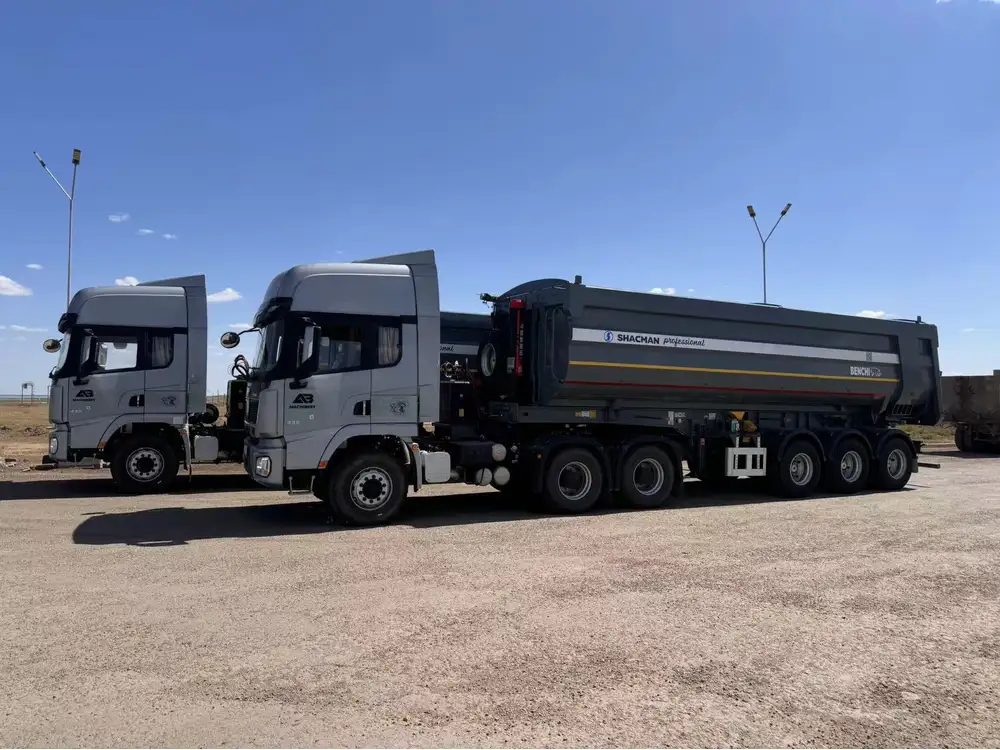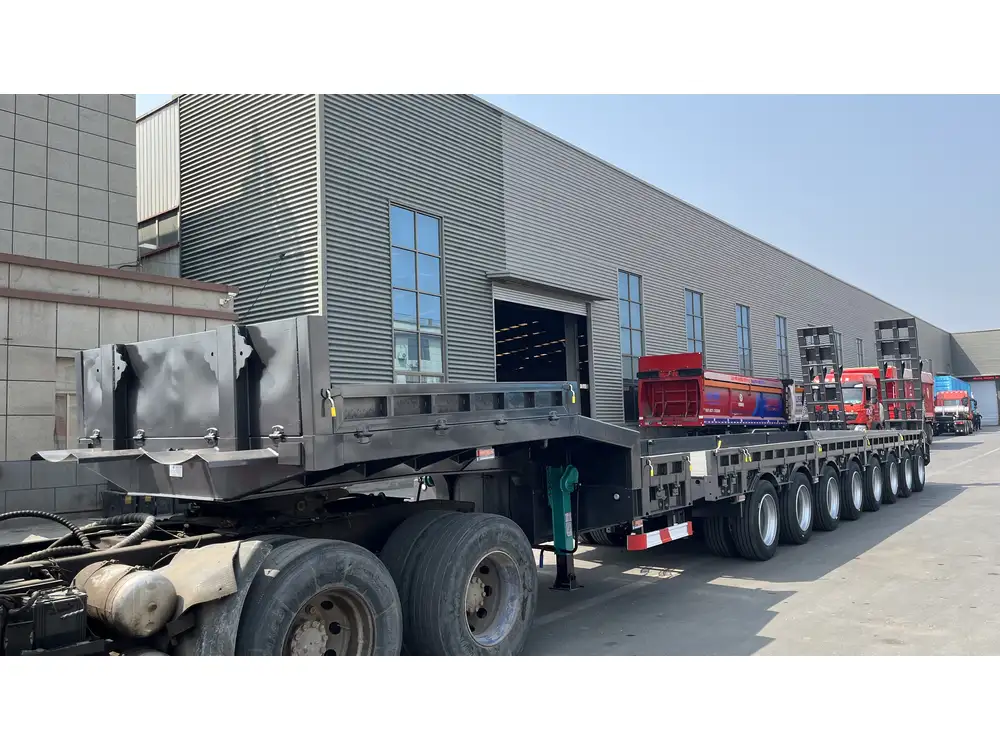When it comes to understanding the specifications of an 86 Hyundai semi-trailer, one of the most frequently asked questions revolves around the wheel configuration. The inquiry ‘how many wheels on an 86 Hyundai semi trailer’ not only underscores the technical aspects but also speaks to the practicality and functionality of the vehicle. In this article, we will dissect various elements surrounding the wheel configuration, maintenance considerations, and why understanding this information is paramount for operators.
Wheel Configuration of the 86 Hyundai Semi Trailer: A Detailed Examination
Standard Wheel Count
Typically, a standard semi-trailer, including the 86 Hyundai variant, features 18 wheels in total, which are arranged as follows:
| Axle Configuration | Quantity | Wheels per Axle | Total Wheels |
|---|---|---|---|
| Tractor Unit (Cab) | 1 Axle | 2 Wheels | 2 |
| Semi-Trailer | 3 Axles | 6 Wheels | 12 |
| Total | – | – | 18 |
This configuration is critical for weight distribution, stability during transit, and compliance with transportation regulations.

Significance of Wheel Count
The number of wheels on a semi-trailer significantly influences its performance attributes, including:
Load Capacity:
- A higher wheel count typically translates to greater weight capacity. Each wheel can bear a specific load, and therefore, more wheels mean a larger load capacity.
Stability:
- More wheels improve the overall stability of the semi-trailer, especially when navigating corners and uneven road surfaces.
Tire Wear:
- Distributing the weight across more wheels can reduce tire wear, prolonging the lifespan of the tires and enhancing overall maintenance efficiency.
Tire Specifications for the 86 Hyundai Semi Trailer
Understanding the specific tire specifications for the 86 Hyundai semi trailer plays a crucial role in ensuring optimal performance. Here’s an overview.
Recommended Tire Sizes
Front Axle Tires: Commonly feature 11R22.5 size tires, which are designed for heavy-duty performance and increased traction.
Rear Axle Tires: Often utilize 11R22.5 size tires as well, supporting the weight distribution across the multiple axles.

Tire Pressure Guidelines
Maintaining proper tire pressure is essential for vehicle performance. Here’s a concise table with recommended tire pressures:
| Tire Type | Recommended PSI |
|---|---|
| Front Axle Tires | 100 PSI |
| Rear Axle Tires | 90 PSI |
Importance of Regular Inspections
Regular tire inspections should be part of the maintenance routine to avoid mishaps on the road. Look for:
- Tread depth and wear patterns.
- Sidewall damage or punctures.
- Proper inflation levels.
Advantages of Proper Wheel Configurations in Semi-Trailers
Beyond just numbers, the wheel configuration offers a range of advantages for operators of an 86 Hyundai semi-trailer.

Enhanced Maneuverability
With a well-planned wheel and axle setup, maneuverability improves, allowing drivers to make sharper turns without risking the stability of the trailer.
Improved Brake Efficiency
A setup with multiple wheels can more evenly distribute braking force, reducing wear on individual tires and enabling a more controlled stopping experience. This is especially significant when transporting heavy loads.
Compliance with Regulations
Understanding the wheel configuration and adhering to legal restrictions ensures compliance with weight limits set forth by regulatory bodies. This not only avoids costly fines but also promotes safe driving practices.

Weight Distribution Considerations for Maximum Efficiency
With any semi-trailer, weight distribution is key to ensuring that the vehicle operates efficiently and safely.
Factors Influencing Weight Distribution
Load Type: Different loads require different weight distributions. For instance, a load consisting of heavy machinery may need closer alignment to the rear axle compared to lighter materials.
Road Conditions: Uneven road surfaces and inclines can affect weight distribution and should be considered when loading the trailer.
Balancing Load Across Axles
Strategies for ensuring balanced loads include:
Center of Gravity: Aim to keep the center of gravity low and centered.
Adjustable Suspension Systems: Utilize models that allow for adjustments based on load distribution to enhance balance.

Maintenance and Upkeep: Maintaining Your Wheels
Proper maintenance is paramount for ensuring the longevity of your semi-trailer’s wheels and tires.
Regular Maintenance Checklist
| Maintenance Task | Frequency |
|---|---|
| Inspect tires | Every Trip |
| Check tire pressure | Weekly |
| Rotate tires | Every 6,000 miles |
| Examine wheel bearings | Monthly |
| Brake system inspection | Every 12,000 miles |
Common Issues to Watch For
- Rapid tire wear: Often indicates misalignment or improper load distribution.
- Vibrations during transit: Can point to unbalanced tires or potential mechanical issues.

Understanding Load Limits for Safety
When inquiring about the wheel configuration of an 86 Hyundai semi trailer, understanding load limits becomes crucial for safe operation.
Maximum Load Capacity
Estimating the maximum load weight is vital. An average 86 Hyundai semi-trailer with 18 wheels can typically support up to 36,000 pounds. However, this capacity is dependent on the tire specifications and axle ratings.
Importance of Compliance with Load Limits
Overloading a trailer can lead to severe consequences, including:
- Increased wear on tires and components.
- Potential for accidents due to reduced braking effectiveness.
- Legal repercussions—many regions enforce strict adherence to weight limits.

Innovations to Consider
As the world of transport evolves, semi-trailer manufacturers, including Hyundai, are incorporating technological advancements to enhance performance.
Smart Tires
Imagine tires equipped with sensors that provide real-time data on tire pressure and temperature. This innovation helps truck drivers monitor conditions and make informed decisions that could prevent accidents and reduce downtime.
Adaptive Suspension Systems
The adaptation of suspension systems that alter the handling dynamics of the truck based on load conditions can significantly improve driving safety and vehicle performance.

Conclusion
Navigating the landscape of semi-trailer specifications—especially something as fundamental as ‘how many wheels on an 86 Hyundai semi trailer’—is multifaceted. It integrates aspects of engineering, safety, maintenance, and regulations critical for efficient transportation operations. By understanding the wheel configuration, tire specifications, maintenance practices, weight distribution needs, and recent innovations, operators can enhance their semi-trailer performance drastically. Comprehensive knowledge translates not only to better operational efficiencies but also, most importantly, to improved safety on arterial routes.
In sum, investing time in understanding these details yields not just higher operational efficiency but also peace of mind on the highways—an indispensable asset for any transport operator.



